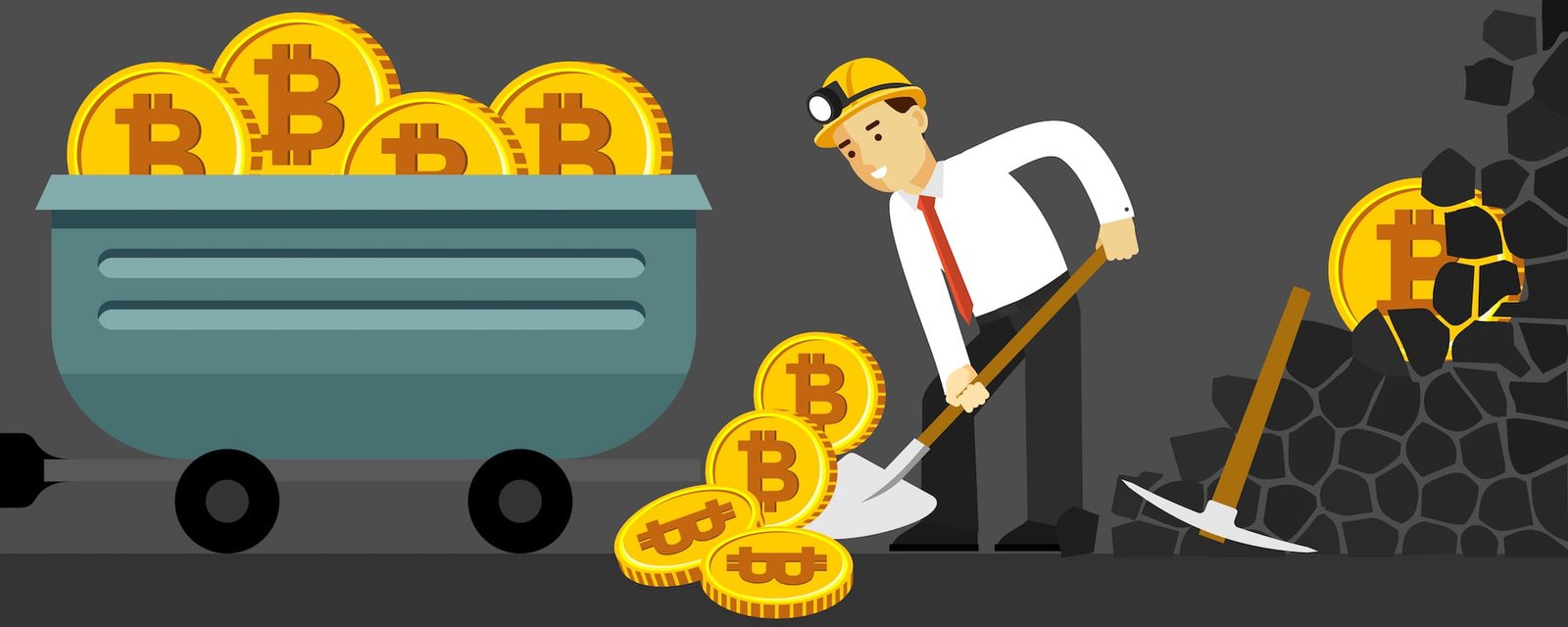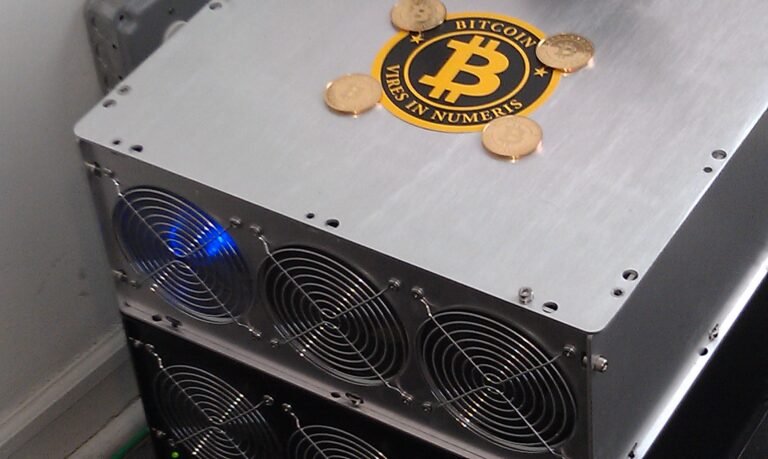The cryptocurrency mining landscape has evolved dramatically, and finding the best bitcoin mining hardware 2025 has to offer requires careful consideration of performance, efficiency, and profitability. With Bitcoin’s continued growth and the recent halving event affecting mining rewards, selecting the right ASIC miner has become more critical than ever for both newcomers and experienced miners looking to maximize their returns. Modern bitcoin mining demands specialized Application-Specific Integrated Circuit (ASIC) miners that can deliver exceptional hash rates while maintaining energy efficiency.
The best bitcoin mining hardware 2025 market features cutting-edge machines from leading manufacturers like Bitmain, MicroBT, and Canaan, each offering unique advantages for different mining scenarios and budgets. Whether you’re planning a large-scale mining operation or considering home mining, understanding the current hardware landscape will help you make informed decisions that align with your investment goals and operational requirements.
Why Choosing the Right Bitcoin Mining Hardware Matters in 2025
The bitcoin mining industry has reached unprecedented levels of competition and sophistication. With the April 2024 halving cutting block rewards from 6.25 BTC to 3.125 BTC, miners now earn half the Bitcoin for the same computational work. This fundamental change has made selecting efficient hardware more crucial than selecting any random mining equipment.
Energy efficiency has become the primary differentiator between profitable and unprofitable mining operations. The best mining hardware combines high hash rates with low power consumption, ensuring miners can maintain profitability even when Bitcoin prices fluctuate or network difficulty increases. Additionally, the total cost of ownership extends beyond the initial hardware purchase.
Factors like cooling requirements, maintenance costs, and expected lifespan significantly impact long-term profitability. Modern ASIC miners are designed with these considerations in mind, offering improved durability and reduced operational overhead.
Best Bitcoin Mining Hardware 2025
Bitmain Antminer S21 XP Hyd – The Efficiency Champion
The Antminer S21 XP Hyd represents the pinnacle of bitcoin mining technology in 2025. It packs an impressive 473 TerraHash (TH/s) of hash power, albeit in a relatively large package. This hydro-cooled beast delivers exceptional performance while maintaining remarkable energy efficiency.
Key Specifications:
- Hash Rate: 473 TH/s
- Power Consumption: 5,360W
- Efficiency: 11.3 J/TH
- Cooling: Hydro (water-cooled)
- Price Range: $8,000 – $12,000
The S21 XP Hyd’s water cooling system provides superior thermal management, allowing for consistent performance even in challenging environments. This makes it ideal for large-scale operations where maintaining optimal temperatures is crucial for maximizing uptime and hardware longevity.
Antminer S21 Pro – Best Air-Cooled Performance
The Antminer S21 Pro is one of the most powerful air-cooled Bitcoin mining ASIC on the market today. The S21 Pro boasts a hashrate of 234 TH/s with an efficiency of 15 J/TH, consuming around 3510 watts. This makes it an excellent choice for miners who prefer traditional air cooling systems.
Key Specifications:
- Hash Rate: 234 TH/s
- Power Consumption: 3,510W
- Efficiency: 15 J/TH
- Cooling: Air-cooled
- Price Range: $4,500 – $6,500
The S21 Pro strikes an excellent balance between performance and practicality. Its air-cooled design eliminates the complexity and potential failure points associated with liquid cooling systems, making it perfect for miners who prioritize reliability and ease of maintenance.
MicroBT Whatsminer M60S+ – The Powerhouse Alternative
The Whatsminer M60S+ offers competitive performance with robust build quality that has made MicroBT a respected name in the mining community. This machine provides excellent value for miners seeking alternatives to Bitmain products.
Key Specifications:
- Hash Rate: 236 TH/s
- Power Consumption: 3,344W
- Efficiency: 14.2 J/TH
- Cooling: Air-cooled
- Price Range: $4,200 – $6,000
MicroBT’s reputation for durability and consistent performance makes the M60S+ an attractive option for miners who value long-term reliability. The slightly better efficiency compared to some competitors can translate to meaningful cost savings over the miner’s operational lifetime.
Antminer S19 XP Hydro – Proven Performer
The Bitmain AntMiner S19 XP Hydro is considered one of the best options on the market for Bitcoin mining. While not the newest model, it continues to offer excellent performance and has proven its reliability in real-world mining operations.
Key Specifications:
- Hash Rate: 255 TH/s
- Power Consumption: 5,304W
- Efficiency: 20.8 J/TH
- Cooling: Hydro (water-cooled)
- Price Range: $3,500 – $5,500
The S19 XP Hydro represents mature technology with a track record of consistent performance. Its lower entry price makes it accessible to miners with smaller budgets while still delivering competitive hash rates.
Canaan AvalonMiner 1566 – Budget-Conscious Choice
Canaan’s AvalonMiner 1566 provides an entry point for miners seeking proven technology at more affordable price points. While not matching the peak performance of newer models, it offers solid returns for cost-conscious operators.
Key Specifications:
- Hash Rate: 185 TH/s
- Power Consumption: 3,420W
- Efficiency: 18.5 J/TH
- Cooling: Air-cooled
- Price Range: $2,800 – $4,200
For miners with limited capital or those testing the waters before scaling up, the AvalonMiner 1566 provides a reasonable balance of performance and affordability. Its proven track record and availability make it a practical choice for many scenarios.
Bitcoin Mining Profitability Analysis for 2025

Understanding mining profitability requires analyzing multiple variables that directly impact returns. The short answer: Yes, but only if the following conditions are fulfilled. Cryptocurrency mining is still profitable in 2025, albeit with closer margins than ever before.
Electricity Costs – The Make-or-Break Factor
Electricity is undoubtedly one of the most significant fees for Bitcoin miners. In 2025, the electricity fee will play a central role in determining our profitability. Successful mining operations typically require electricity costs below $0.08 per kWh, with the most profitable operations accessing rates under $0.05 per kWh.
Miners in regions with abundant renewable energy sources, particularly those near hydroelectric facilities or geothermal plants, maintain significant competitive advantages. These locations often provide stable, low-cost power that enables profitability even during challenging market conditions.
ROI Calculations and Break-Even Analysis
Based on a Bitcoin price of $82,277 (as of March 12, 2025), and current mining data, here’s the breakdown: … Key takeaway: This machine remains profitable even if the Bitcoin price drops to around $46,000, providing a 43% buffer to break-even. Modern mining hardware typically requires 12-18 months to achieve full ROI under optimal conditions. However, this timeline can vary significantly based on:
- Bitcoin price fluctuations
- Network difficulty adjustments
- Electricity costs
- Hardware maintenance requirements
- Cooling and infrastructure costs
Market Conditions and Future Outlook
The post-halving mining environment has created a more selective landscape where only the most efficient operations remain profitable. Miners will need to choose between more costly but efficient equipment and older devices with lower performance. This reality emphasizes the importance of investing in cutting-edge hardware that can maintain profitability across various market scenarios. While initial costs may be higher, the long-term operational advantages often justify the investment.
How to Choose the Best Bitcoin Mining Hardware for Your Needs
Assessing Your Mining Goals
Before selecting hardware, clearly define your mining objectives. Are you building a large-scale commercial operation, starting a home mining setup, or testing the waters with a small investment? Your goals will significantly influence the optimal hardware choice. Commercial operations should prioritize maximum efficiency and scalability, even if initial costs are higher. Home miners might focus on noise levels, heat generation, and electrical requirements that fit residential constraints.
Calculating Total Cost of Ownership
The purchase price represents only one component of mining hardware costs. Consider these additional factors:
Infrastructure Requirements:
- Electrical installations and upgrades
- Cooling systems (air conditioning, ventilation)
- Network connectivity and monitoring systems
- Physical security measures
Operational Costs:
- Monthly electricity consumption
- Regular maintenance and cleaning
- Potential repair costs and spare parts
- Insurance and facility costs
Performance Degradation: Modern ASIC miners typically maintain peak performance for 2-3 years before efficiency begins declining. Factor this depreciation into your long-term profitability calculations.
Location and Environmental Considerations
Your mining location significantly impacts hardware selection and profitability. Cold climates can reduce cooling costs, while areas with cheap renewable energy provide operational advantages. Humidity, dust, and temperature stability all affect hardware longevity. Miners in challenging environments should prioritize robust, well-sealed units with superior cooling systems.
Setting Up Your Bitcoin Mining Operation

Infrastructure Planning
Successful mining operations require careful infrastructure planning that extends well beyond purchasing hardware. Electrical capacity, cooling systems, and network connectivity form the foundation of profitable mining.
Electrical Requirements: Most modern ASIC miners require 220V power connections for optimal efficiency. Ensure your electrical system can handle the sustained high-power loads without overheating or tripping breakers. Professional electrical installation is typically necessary for anything beyond single-unit home mining.
Cooling and Ventilation: Mining hardware generates substantial heat that must be managed effectively. Air-cooled units require robust ventilation systems, while hydro-cooled models need reliable water cooling infrastructure. Plan for 40-50% additional power consumption for cooling systems in warmer climates.
Security and Monitoring
Modern mining operations require comprehensive monitoring systems to track performance, detect issues, and optimize operations. Remote monitoring capabilities enable quick responses to problems that could impact profitability. Physical security becomes increasingly important as mining operations scale. ASIC miners represent significant investments that require protection from theft and environmental damage.
Mining Pool Selection and Configuration
Choosing the Right Mining Pool
Solo mining is no longer viable for individual miners due to Bitcoin’s network difficulty. Mining pools aggregate hash power from multiple miners, providing more consistent payouts and reduced variance.
Consider these factors when selecting a mining pool:
- Fee structure (typically 1-3%)
- Payout methods and minimums
- Pool size and hash rate distribution
- Geographic location and ping times
- Reputation and track record
Popular Mining Pools for 2025:
- AntPool – Large, established pool with competitive fees
- F2Pool – Global presence with reliable payouts
- Slush Pool – Oldest pool with transparent operations
- Poolin – Feature-rich interface with detailed statistics
Optimizing Mining Software
Most modern ASIC miners include built-in mining software, but understanding configuration options can improve performance and monitoring capabilities. Key settings include:
- Pool addresses and backup pools
- Worker names and passwords
- Frequency and voltage settings (advanced users)
- Temperature and fan controls
- Automatic restart configurations
Maintenance and Troubleshooting
Regular Maintenance Procedures
Consistent maintenance ensures optimal performance and extends hardware lifespan. Develop a maintenance schedule that includes:
Weekly Tasks:
- Visual inspection of all units
- Temperature monitoring and log review
- Network connectivity verification
- Performance metrics analysis
Monthly Tasks:
- Deep cleaning of air intakes and fans
- Dust removal from heat sinks
- Electrical connection inspection
- Firmware updates when available
Quarterly Tasks:
- Comprehensive performance testing
- Thermal paste replacement (if applicable)
- Structural integrity check
- Power consumption verification
Common Issues and Solutions
Understanding common mining hardware problems enables quick resolution and minimizes downtime:
Overheating Issues:
- Check and clean air filters
- Verify fan operation and speeds
- Ensure adequate ventilation
- Consider ambient temperature reduction
Hash Rate Drops:
- Review temperature logs
- Check for firmware corruption
- Verify pool connectivity
- Inspect for hardware degradation
Network Connectivity Problems:
- Test internet connection stability
- Verify pool server accessibility
- Check router and switch configurations
- Consider redundant network connections
Environmental Impact and Sustainability
Energy Efficiency Trends
The mining industry has made significant strides in energy efficiency, with modern ASIC miners delivering substantially more hash power per watt compared to earlier generations. This trend continues as manufacturers compete to produce the most efficient mining hardware.
Leading mining operations increasingly focus on renewable energy sources, both for cost savings and environmental responsibility. Solar, wind, and hydroelectric power provide sustainable alternatives to grid electricity while often offering lower operational costs.
Green Mining Initiatives
Progressive mining companies are implementing comprehensive sustainability programs that include:
- Carbon offset purchases
- Renewable energy procurement
- Waste heat utilization for other purposes
- Equipment recycling and responsible disposal
These initiatives not only reduce environmental impact but can also improve public perception and regulatory compliance in jurisdictions with environmental regulations.
Future Trends in Bitcoin Mining Hardware
Technological Advancements
The next generation of mining hardware will likely focus on even greater energy efficiency and improved thermal management. Advances in semiconductor manufacturing continue to enable more powerful chips that consume less power per hash. Modular designs are becoming more common, allowing miners to upgrade specific components rather than replacing entire units. This approach reduces costs and minimizes electronic waste.
Market Consolidation
The mining hardware market continues to mature, with established manufacturers like Bitmain, MicroBT, and Canaan dominating production. New entrants face significant barriers due to the specialized knowledge and capital requirements for developing competitive ASIC chips. This consolidation may lead to more standardized products and improved customer support, but could also result in less price competition and innovation pressure.
Regulatory Considerations
Mining regulations continue evolving globally, with some jurisdictions implementing environmental standards or efficiency requirements. Hardware manufacturers are responding by designing products that meet or exceed these standards. Miners should consider regulatory trends in their planning, particularly for long-term investments in jurisdictions with developing cryptocurrency regulations.
Also Read: Bitcoin Mining Profitability Calculator Complete Guide to Mining ROI in 2025
Cost-Benefit Analysis Home vs. Commercial Mining
Home Mining Considerations
In 2025, Bitcoin mining at home is no longer the plug-and-play hobby it once was. While it remains possible with the right conditions, especially access to cheap, renewable power, it is no longer broadly profitable for the average user.
Home mining faces several challenges:
- Higher electricity rates compared to industrial operations
- Limited cooling and ventilation capabilities
- Noise concerns in residential areas
- Electrical system limitations
- Heat management in living spaces
However, home mining can still be viable for enthusiasts with access to cheap electricity, adequate space, and tolerance for noise and heat generation.
Commercial Mining Advantages
Large-scale operations benefit from:
- Wholesale electricity rates
- Specialized cooling infrastructure
- Professional maintenance capabilities
- Economies of scale in hardware purchases
- Dedicated facilities designed for mining
Commercial operations can justify higher initial investments in the most efficient hardware because the volume of operations amplifies the benefits of improved efficiency.
Conclusion
Selecting the best bitcoin mining hardware 2025 requires balancing performance, efficiency, and cost considerations against your specific operational requirements and market outlook. The mining landscape has become increasingly competitive, making hardware selection more critical than ever for achieving profitability. The top-tier options like the Antminer S21 XP Hyd and S21 Pro represent the current pinnacle of mining technology, offering the efficiency needed to maintain profitability in the post-halving environment.
However, success depends equally on securing affordable electricity and implementing proper operational procedures. Whether you choose cutting-edge hydro-cooled units or proven air-cooled alternatives, focus on total cost of ownership rather than just initial purchase price. The best bitcoin mining hardware 2025 investments are those that align with your long-term mining strategy and operational capabilities. Ready to start your mining journey? Research current pricing, secure reliable electricity sources, and choose hardware that matches your specific needs and budget.

